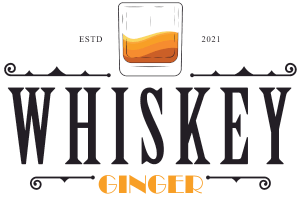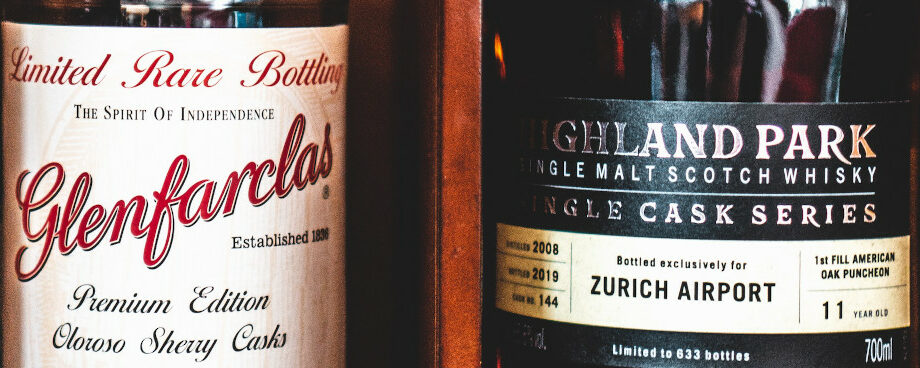I have mentioned the idea that normal release spirits, and some prestige instances, are of sufficient quality and price that one need not spend extra money on the so-called “unicorn whiskies,” both here and elsewhere. Though intriguing, you need not spend hundreds to get a good drink.
No, you don’t, but…
The crowd’s opinion? A higher quality of life comes with age, right? Some cheeses, dry-aged beef, Balsamic vinegar, and spirits, as well as wines and (not too) old music (say, from the 1960s to the 1980s), improve with age. That is if you believe the common belief. We could debate music all day (and you wouldn’t win), but we’re here to talk about booze, namely malt whisky.
The general public has been brainwashed into thinking that older whiskies are superior. The difficulty is that this leads to unrealistic expectations, inflated prices, and a distortion of the market. You can rest easy knowing that many excellent whiskies are still readily accessible as standard releases from your preferred distillery.
Whisky is Best When Aged
Although a master blender may work wonders by introducing some newer ingredients, time still has no equal. This is not something that can be done overnight, but it also does not need decades. There isn’t any other option. Every time a barrel of aged malt is utilized, whether for a single release or as part of a bigger blend, the supply decreases and the price goes up.
It’s a factor in the rise in popularity of NAS whiskies (non-age statement whiskies) among numerous distilleries. It enables them to provide consumers with high-quality whiskies without ever having to put an embarrassingly low age claim, like “8-Years-Old” or “12-Years-Old,” on the bottle. That’s so inhumane.
As a global community, we tend to lack patience and dislike having to wait. People also seem to go through cycles. If you go back several decades, most people didn’t put the best Burgundies in the same category as the best Bordeaux. What a difference a little time makes. Once again, malt whisky was in a deep rut a few decades ago. Bourbon was commonly regarded as a standard American whisky. The cycle continues. Bourbon, scotch, and malt whiskies are all selling like hotcakes right now. Enthusiasts are willing to shell out exorbitant sums for the very best and rarest items.
The Distilleries Should Capitalize on This Situation
Maybe in ten years, the buzz will have died down and the distilleries will be stuck with a bunch of old, unused alcohol. Stranger things have happened, but I’m not holding my breath.
Unicorn whiskies, however, are currently quite popular due to their fantastic matured releases being limited to only a few thousand bottles, if not fewer. Despite the exorbitant prices of some of these bottles—some cost as much as a vehicle or a house—this trend shows no signs of abating.
Investors who bought these whiskies merely for the sake of their price increases have done quite well.
However, there is an element of risk involved with them. Few of us would have been willing to pay $27,500 when Yamazaki 55-Year-usual malt was first introduced a few years ago (the usual argument that you can always drink it if you don’t make a fortune is a bit thin when you are talking about such costs). We might have been more willing to part with the bottle if we’d known that in only two months, it would sell at auction for more than $800,000.
Certain Distilleries Only Make Vintage Products
In this respect, The Macallan excels. After aging for 81 years in a sherry cask, they finally released The Reach. There were only 288 bottles produced, making each one worth an estimated $300,000. They also launched a 72-year-old malt for about the same price as the 78-year-old and a 78-year-old for around half the price. There are some remarkable old malts available from Gordon & MacPhail as well; for example, their ‘Generations Glenlivet 80-Year-Old’ retails for $110,000 and is available in just 250 decanters designed by architect Sir David Adjaye. Their “Generations Mortlach 75-Year-Old” cost $43,000 for one of only 100 decanters made available.
After being blended with whiskies from 1868, 1878, 1926, and 1939, Dalmore’s 64-year-old matured for a further 64 years. Just three bottles total. Karuizawa Vintage Sherry Cask Aged 50-Year-Old Malt is another great example from Japan. That’s $170,000 for 473 bottles.
It’s not all insane cash. The Last Drop Company has established itself as a market leader by securing and releasing extremely limited quantities of exceptional vintage spirits (and fortified). ‘Just’ $3,900 got you a bottle of their 50-year-old blended Scotch whisky. It had more than 82 different kinds of whisky. Their $21,500 ‘1980 Buffalo Trace Straight Bourbon Whisky’ is a bit above the average price. It would take a very long time to list all of these.
The Family Cask of Glenfarclas Whisky
Glenfarclas is another well-known distillery that has achieved notoriety for both its regular releases and some exceptional vintage bottlings. We reviewed the Glenfarclas Family Cask Trunk, an exceptional release from this Speyside distillery, a while back. Fifty 200-milliliter bottles of whisky, each with a vintage date ranging from 1954 to 2003, were stashed within the trunk. For a modest £100,000, only sixty trunks were made available to the public.
Perhaps just a handful of distilleries worldwide produce spirits of any kind and have access to such a wide variety of vintages. No, this is not the first release of its kind. A collection of 43 whiskies from Glenfarclas, including the 1952 and 1953 vintages, is now sold out. A price of £6,500 at the time looks like a steal now. They also put out a limited edition Sixty-Year-Old from a cask that was filled in 1953; only 360 bottles were made available. You can find a few for sale on the internet for close to €30,000 if you look hard enough.
Although the first license for Glenfarclas wasn’t issued until 1836, the earliest records of the distillery date back to the late 18th century. John Grant bought the distillery in 1865, and it has remained in the family ever since. His son George took over the family business, and from there on out, it was all Johns and Georges (they could have at least thrown in a Paul or a Ringo). They started in 1976 and currently have six stills (three wash stills and three spirit stills, with four in use and two in reserve at any given moment). Around 68,000 barrels have been silently aging at the distillery for decades. Glenfarclas was named “Distiller of the Year” at the 2022 Icons of Whisky gala. Glenfarclas has a distinctive standard range in addition to limited releases like the Family Cask Trunk.
You can choose between malts that are 10, 12, 15, 17, 21, 25, 30, and 40 years old. The older specimens of these whiskies certainly have something special about them, and while personal choice will always reign, that doesn’t make them any less excellent. I also really like 15-year-olds and 25-year-olds. There was an 8-Year-Old, but I’m not sure if it’s still made, and there are rumors that production of the 21-Year-Old has been temporarily halted (even though it’s one of their more popular whiskies). In addition, Glenfarclas was the first distillery to produce a cask-strength malt, which is now widely available.
Here we are at their newest drop, when my shameful hypocrisy may finally be laid bare. Despite my claims that common bottles can hold their own against rare whiskies, I couldn’t pass up the chance to sample a fifty-year-old malt when it presented itself. Yes, I was the guy scuttling across the shards of glass.
The 50-Year-Old Malt Whisky from Glenfarclas
Glenfarclas has launched a limited edition 50-year-old Highland single malt to commemorate the industry’s golden anniversary and the entrance of the company’s chairman, John Grant. The current ‘John’ represents the fifth generation of leadership at this family-owned distillery. Glenfarclas Distillery Manager Callum Fraser and Managing Director Douglas Belford chose it for bottling at 50% ABV. Douglas MacDonald, who was the distillery manager back in the day, came up with the plan.
The reason I come to work every day is to make things like Glenfarclas 50-Year-Old,” said Callum Fraser. It is a testament to the dedication we have at Glenfarclas that we were able to create something so unique, with such a great history. This new whisky is a tribute to the distillers who produced and put down the spirit in the late 1960s and to the vision of the Grant family all those years ago.
This dram tastes like heaven to me. It has a remarkable complexity of flavor and aroma, showcasing every step of the whisky-making process from the earthy aroma of the dunnage warehouse to the gentle, natural smokiness of the Speyside peat used in those days to the distinctive flavor of the water we utilize. There’s nothing more fascinating than watching a whisky develop over time, both in terms of aroma and flavor.
John entered the whisky industry in 1972 and began working at Glenfarclas in 1974, eventually gaining experience in all areas of the company. Since 1979, when he was named Managing Director, he has been instrumental in expanding the company’s foreign sales markets, eventually rising to the position of chairman in 2002. In 1997, he was named a ‘Keeper of the Quaich’ in honor of his work in the whisky business. After that, in 2021, he was admitted into the Whisky Magazine Hall of Fame.
Unicorn whiskies, as has been custom, come in beautiful packaging. A custom-engraved bottle of Glencairn whisky in a handsome gift box. There are only 836 bottles made, and each one might cost you roughly $9,500. Who can predict what the next few months will bring?
The Tasting Notes
Jaw-droppingly good. Everything a whisky connoisseur could want and more. The color is a beautiful bronze copper. The first thing that comes to mind is warm apple pie right out of the oven. Scents of freshly baked pastries, teak, and smokey wood. Aromas of cinnamon and orange peel, with a touch of caramel and fudge. Combination of milk and dark chocolate. Complex, intense, lengthy, perfectly balanced, and exceptionally long-lasting. A remarkable character. Things to tick off a list, if funds allow.

